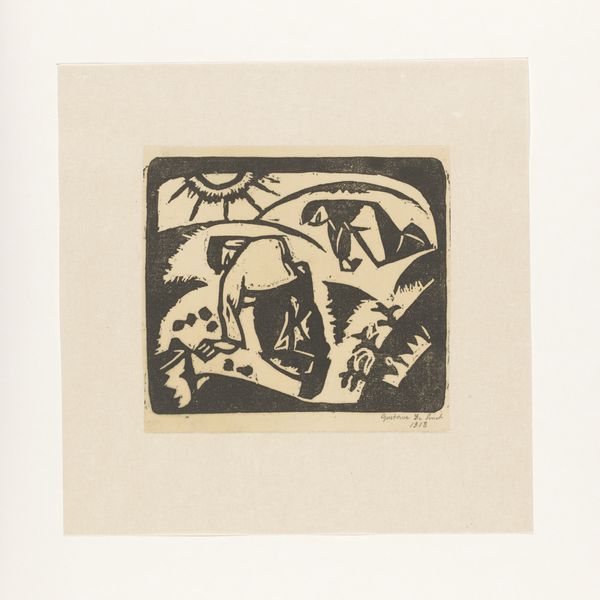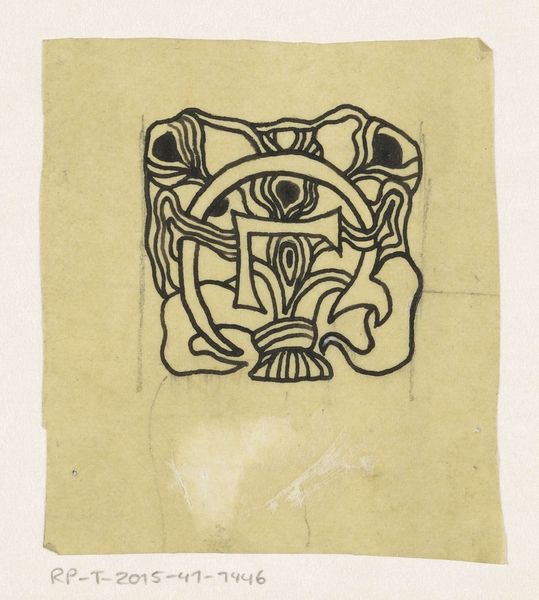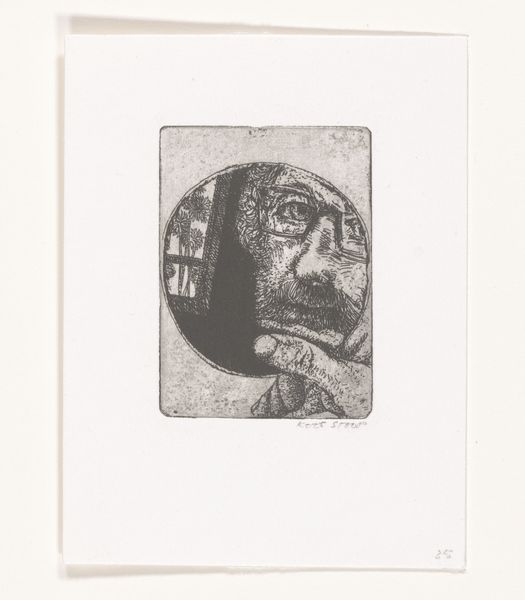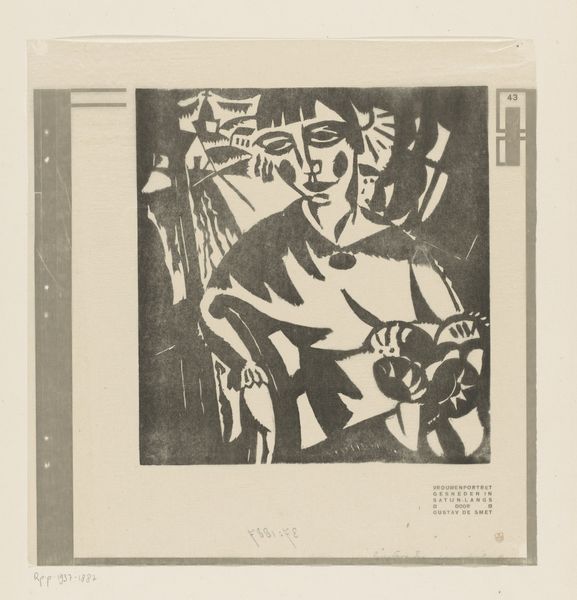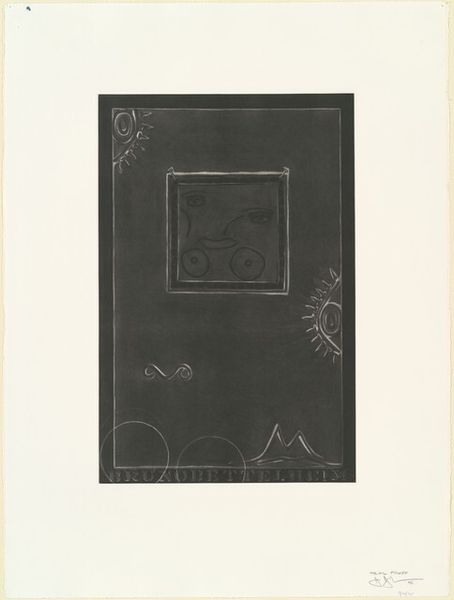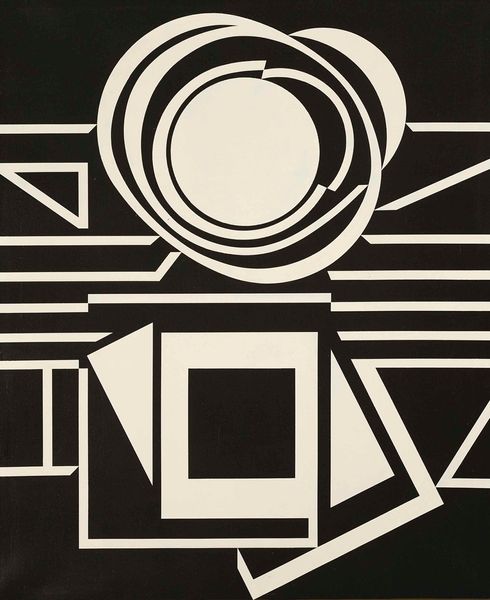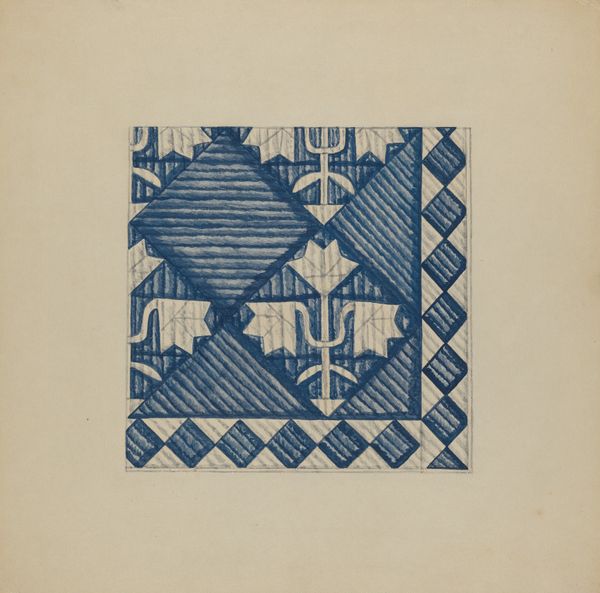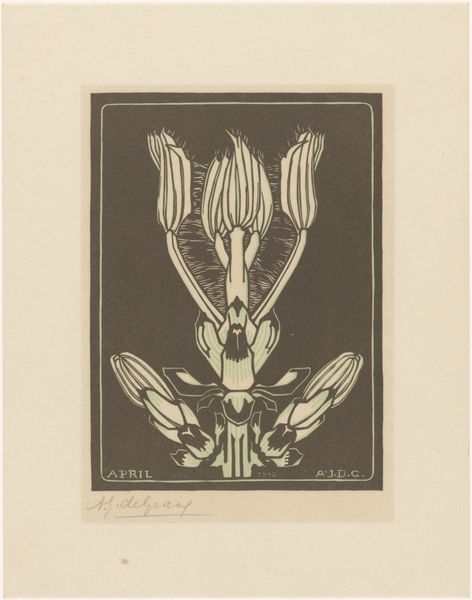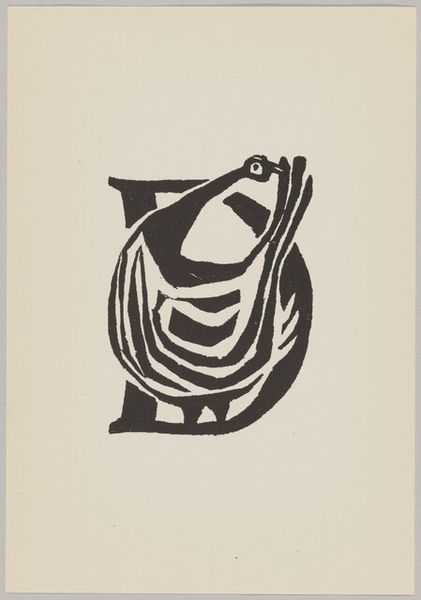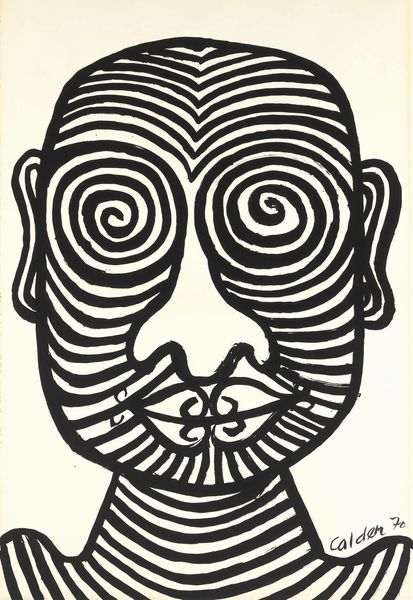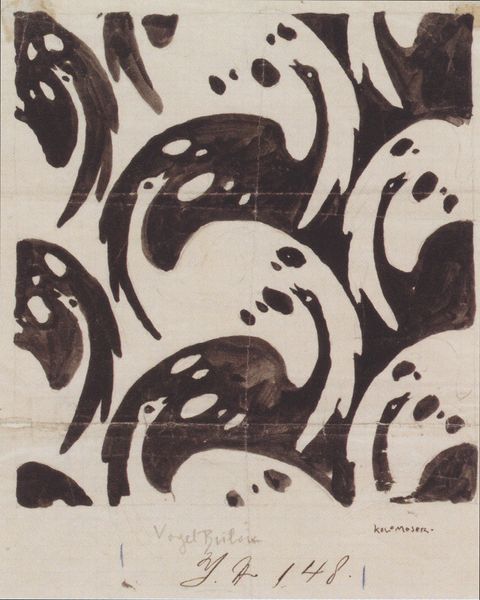
graphic-art, print, linocut
#
graphic-art
#
art-nouveau
# print
#
linocut
#
linocut print
#
geometric
#
symbolism
Dimensions: 26.7 x 28.5 cm
Copyright: Public domain
Curator: Koloman Moser conceived this linocut print as a draft for the emblem of the Association of Austrian Artists Secession in 1897. Editor: Stark, isn’t it? The flat, black geometric shapes against the ochre paper feel incredibly decisive. The composition is rigid, almost heraldic. Curator: It certainly projects the Secession's aims. Think about it – the bold simplicity, the embracing geometric shapes... These elements consciously rejected the traditions of the Viennese art establishment, embracing new forms of design and production. Editor: You're right; there's a conscious break happening here. But the emblem itself—three shields unified within a circle—suggests more than just separation. Visually, I’m seeing unification of these distinct forms within a bounded space and it makes me think about what visual elements contribute to harmony. Curator: Exactly. The linocut as a medium is also significant. Its rise correlated with that of other art forms and commercial markets that transformed European cities, with new materials emerging due to industrial output. Editor: Focusing on form, that rhythmic interplay between positive and negative space... the way the curving lines are deliberately cut to create those specific, almost stylized floral motifs— it all guides my eye in this controlled manner. Curator: And beyond just aesthetics, this design and its mode of reproduction helped democratize art. Prints were more accessible, cheaper, and could be distributed more widely than paintings. Moser and the Secession were intent on connecting with a broader public and showing art in a modern society and culture. Editor: So it’s not just a radical aesthetic, but also a re-evaluation of the value chain around making and owning art! Looking again, that small inscription at the bottom gives it the air of something utilitarian as well. This linocut embodies an era questioning, even overturning, hierarchies in art and in the larger world around it. Curator: Precisely. Reflecting on it, the image functions on multiple levels: as an announcement of aesthetic principles, and simultaneously, as a comment on its production and consumption within turn-of-the-century Vienna. Editor: I leave with a newfound appreciation for the visual decisions within it and how those informed, and were informed by, material concerns of that day.
Comments
No comments
Be the first to comment and join the conversation on the ultimate creative platform.
